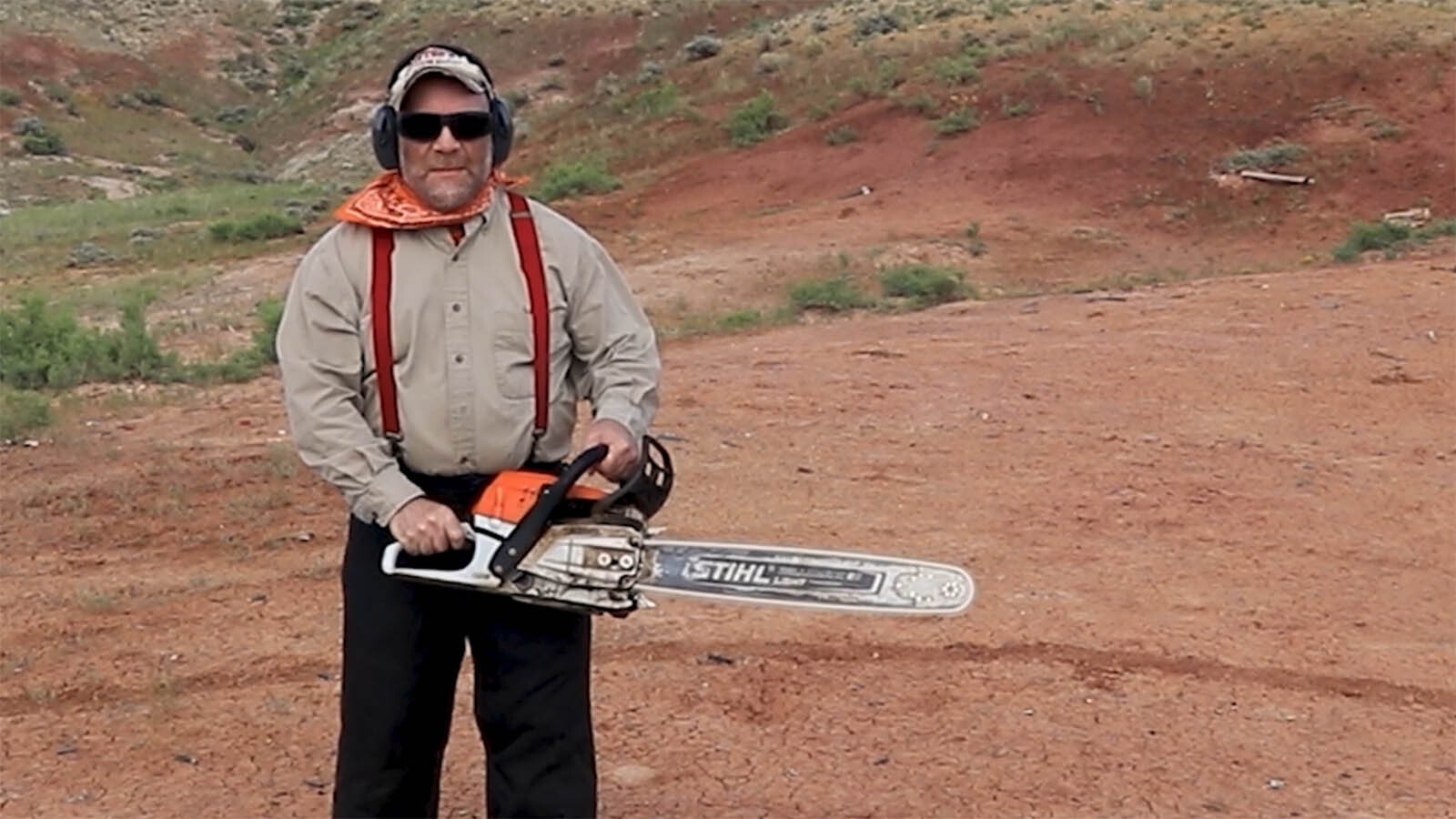Forget about steel, carbon fiber and lightweight composites. For those who hunted 15,000 years ago in what we now call Wyoming, rocks were the only option.
They were rather specific types of rocks that, with the right skills, could be fashioned into weapon tips or knives rivaling the sharpness and lethality of modern gear.
And they had to be good at it. They weren’t going after mere pronghorn, deer or elk. For those Paleoindian hunters, gigantic ancient bison and woolly mammoth were on the menu.
DIY Weaponry
Paleoindian hunters, the “Clovis People,” are thought to have first arrived in what would become Wyoming about 13,000 to 15,000 years ago, Damian Kirkwood told Cowboy State Daily. He manages the Department of State Parks and Cultural Resources cultural records office on the University of Wyoming campus.
To create the arrowheads and spear tips they needed to kill those lumbering mountains of meat – and the knives and scrappers the needed to process their kills – Clovis hunters had to master the art of flintknapping. It’s a skill kept alive by modern practitioners like Kirkwood.
“A highly skilled flintknapper can bang out an arrowhead in about 40 minutes,” he said, adding that after several years of practice, “I consider myself to be about at the intermediate level.”
Materials For The Job
Flint is one variety of stone called chert, Kirkwood said. It was commonly used because of its durability and forgiving nature when being knapped – or struck repeatedly to create a desirable shape and edges.
However, the real prize for ancient Wyoming big game hunters was obsidian. That black, glass-like stone is brittle, but can yield near razor-sharp edges when properly knapped.
“I got a lot of cuts on my hands when I was first learning,” Kirkwood said.
Obsidian is a volcanic stone, and though “X-ray florescent testing,” researchers can determine where any particular piece of it came from.
Many of the obsidian weapon heads and tools found all across Wyoming came from the Yellowstone area, he said. During the paleolithic period, obsidian was a hot commodity.
“We think people carried it with them all over the state and used it frequently in trading,” Kirkwood said.
He and others in Wyoming practice flintknapping for sheer enjoyment. Some states allow hunting with hand-fashioned primitive weapons, he said, but Wyoming doesn’t.
Starting On Beer Bottles And Toilets
Kirkwood first became fascinated with paleolithic tools and weaponry as a child venturing afield with his father, a geologist.
“I would find arrowhead and think, ‘Wow, that’s really cool. I wounder how that was made?” he said.
While earning his undergraduate degree at UW, he took up flintknapping under the direction of some seasoned practitioners in the Archeology and Anthropology departments. Kirkwood continued to practice as he earned his advanced degree.
The main striking tool is called a billet. Traditionally, those were made from the main beams of elk or moose antlers. Antler tines (or the points coming off the main beam) can be used for finer edging work.
That’s done by pressing against the edges of the stone to snap off flakes to sharpen it.
Kirkwood has a full set of traditional antler tools, but he also “cheats” sometimes by using more modern, copper-tipped tools.
One thing he quickly learned is that flintknapping is about finesse, rather than force.
“At first I thought it was just going to involve banging on rocks,” he said. “It’s surprising how little force is actually needed.”
Since obsidian fractures in a manner similar to thick glass or porcelain, beginners will frequently cut their teeth on beer bottles or old toilets, which Kirkwood said he did.
“You can tell that somebody’s a flintknapper when you see an old toilet in their yard, broken apart,” he said.

Brainpower Required
While modern people might think the ancients were brutish and simple-minded, the skill and technical knowhow that goes into flintknapping proves otherwise, Kirkwood said.
It takes keen attention to observe how the stone might fracture and to always be thinking a few steps ahead to produce the desired shape, he said. Intense concentration goes into “reading” the stone, selecting just the right piece and hitting it at precisely the right angles.
And just as with modern arrowheads or bullets, weight can make all the difference.
He and a colleague discovered that by testing obsidian-tipped arrows shot from a recurve bow into ballistic gel. Ballistic gel is roughly the same consistency as muscle tissue and is frequently used in weapons testing.
They soon discovered that if the arrowhead was too light, it wouldn’t produce enough of a wound channel in the gel to have been fatal to an animal. And if it was too heavy, accuracy was lost.
“They (paleolithic hunters) had to find that sweet spots in terms of just the right weight,” he said. “I image it took them a lot of trail and error to achieve that.”
Mass Kill Sites
Much like modern archery hunters do, the ancients likely waited in ambush or stalked up on animals such as deer and elk, he said. But when it came to the massive bison and mammoths, they didn’t take chances on ending up eye-to-eye with a wounded beast.
Instead, they would try to push bison herds into a panic and run them off cliffs, he said. Then, hunters could finish off any wounded animals before processing the carcasses with knives and hide scrapers.
Mammoths could be pushed into narrow pinch points were hunters could hurl spears into them from above, he said.
The remains at such “mass kill sites” still found around Wyoming are treasure troves for researchers, he said.
Just as he was taught the art of flintknapping, Kirkwood said he likes to pass on the knowledge to youngsters any chance he gets. There will be flintknapping demonstrations and hands-on classes during the Wyoming Archeology Fair scheduled for Sept. 9 at the Wyoming Territorial Prison historical site in Laramie.
“There will be some master-level flintknappers there,” Kirkwood said.





